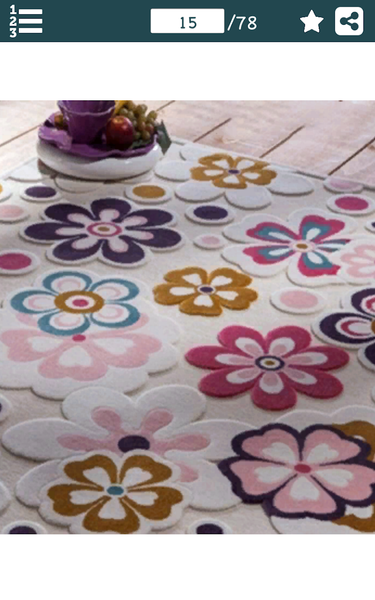- Applications
- Lifestyle
Carpet Design Ideas
Images










Introduction
Buying new carpets can be quite a large investment. Selecting a carpet which would fulfill all your requirements and needs is a fairly complex job. It should always be kept in mind that practicality of the carpets should be given highest priority than just the appearance and overall look of them. The colors should also not be ignored as a mismatch with the room decoration would completely spoil the beauty and elegance of the carpets. The color scheme should be kept in mind when buying the carpet for your home. The whole room area, the decoration and size of the room should be considered important. A carpet which would go by all these aspects would certainly make your room more beautiful and elegant.
A carpet is a textile floor covering typically consisting of an upper layer of pile attached to a backing. The pile was traditionally made from wool, but since the 20th century, synthetic fibers such as polypropylene, nylon or polyester are often used, as these fibers are less expensive than wool.
Afghanistan:
Afghan carpets are commonly known as Afghan rugs. Afghan carpets are a unique and well recognized handmade material design that originates from Afghanistan.
Armenia:
The historian Herodotus writing in the 5th century BC also informs us that the inhabitants of the Caucasus wove beautiful rugs with brilliant colors which would never fade.
Azerbaijan:
The Gultapin excavations discovered several carpet weaving tools which date back to the 4th-3rd millennium BC.
China:
As opposed to most antique rug manufactory practices, Chinese carpets were woven almost exclusively for internal consumption.
India:
Carpet weaving may have been introduced into the area as far back as the eleventh century with the coming of the first Muslim conquerors, the Ghaznavids and the Ghauris, from the West.
Pakistan:
The art of weaving developed in South Asia at a time when few other civilizations employed it. Excavations at Harappa and Mohenjo-Daro– ancient cities of the Indus Valley Civilization– have established that the inhabitants used spindles and spun a wide variety of weaving materials.
Persia Iran:
The Persian carpet is a part of Persian (Iranian) art and culture. Carpet-weaving in Persia dates back to the Bronze Age. The earliest surviving corpus of Persian carpets come from the Safavid dynasty (1501–1736) in the 16th century.
Scandinavia:
Scandinavian rugs are among the most popular of all weaves in modern design.
Turkey:
Turkish carpets (also known as Anatolian), whether hand knotted or flat woven, are among the most well known and established hand crafted art works in the world.
Spain:
Although isolated instances of carpet production pre-date the Muslim invasion of Spain, the Hispano-Moresque examples are the earliest significant body of European-made carpets. Documentary evidence shows production beginning in Spain as early as the 10th century AD.
Serbia:
Pirot carpet[a] (Serbian: Пиротски ћилим, Pirotski ćilim) refers to a variety of flat tapestry-woven carpets or rugs traditionally produced in Pirot, a town in southeastern Serbia.
Bulgaria:
The Chiprovtsi carpet (Чипровци килим) is a type of handmade carpet with two absolutely identical sides, part of Bulgarian national heritage, traditions, arts and crafts.
France:
In 1608 Henry IV initiated the French production of "Turkish style" carpets under the direction of Pierre DuPont. This production was soon moved to the Savonnerie factory in Chaillot just west of Paris.
England:
Knotted pile carpet weaving technology probably came to England in the early 16th century with Flemish Calvinists fleeing religious persecution. Because many of these weavers settled in South-eastern England in Norwich the 14 extant 16th and 17th century carpets are sometimes referred to as "Norwich carpets." These works are either adaptations of Anatolian or Indo-Persian designs or employ Elizabethan-Jacobean scrolling vines and blossoms.
Related Applications










Users Also Installed
Similar Applications






















